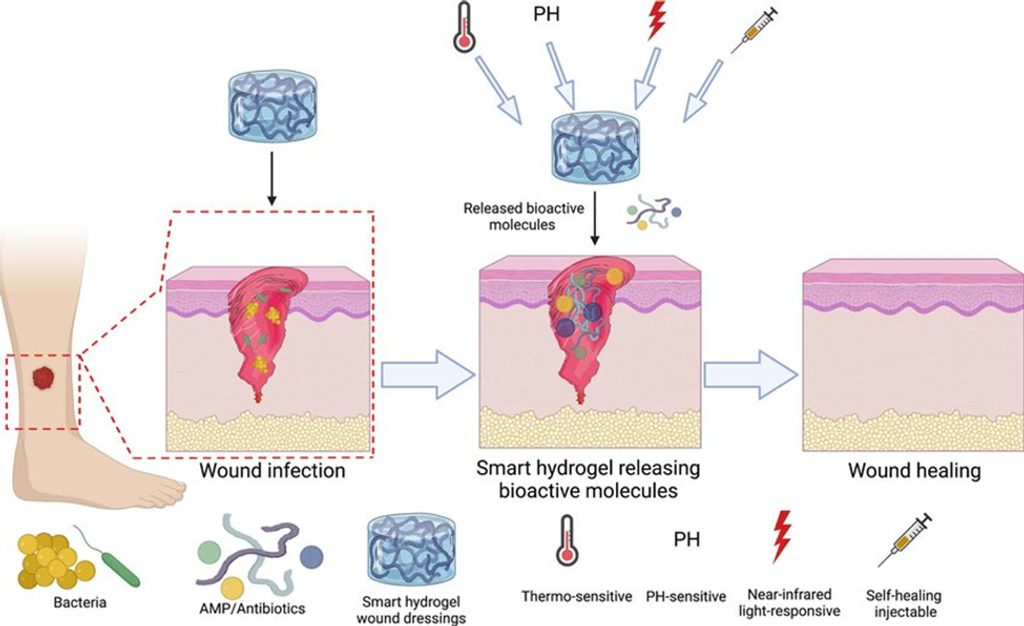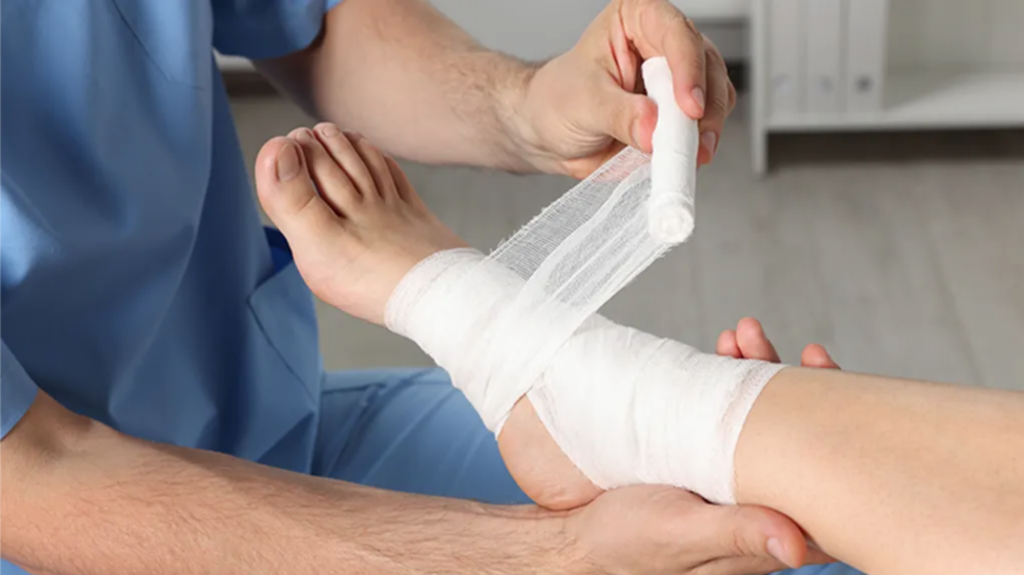International scientists have developed a highly effective chronic wound treatment, eschewing antibiotics in favor of ionized gas to activate wound dressings. This pioneering approach involves the plasma activation of hydrogel dressings, commonly used in wound care, with a unique blend of chemical oxidants known for their efficacy in decontaminating and promoting healing in chronic wounds.
Chronic Wound Treatment: The Urgent Need for Innovation
Professor Rob Short, a Chemistry Professor at the University of Sheffield and a co-author of the study, emphasized the staggering impact of diabetes on a global scale. He highlighted that out of more than 540 million individuals worldwide living with diabetes, around 30 percent are expected to develop foot ulcers during their lifetime. This widespread affliction, often overlooked, constitutes a significant global health crisis projected to escalate in the foreseeable future due to escalating rates of obesity and sedentary lifestyles.
In England alone, the burden of diabetic foot ulcers is profound, with an estimated 60,000 to 75,000 individuals requiring treatment each week. Notably, infection stands out as a major peril associated with these ulcers. Alarmingly, a growing number of infections prove resistant to conventional antibiotic therapies, resulting in approximately 7,000 amputations annually.
Professor Short stressed the critical necessity for innovation in wound management and treatment. He expressed gratitude for the opportunity to contribute to an international team dedicated to developing an alternative treatment approach over a decade.
Unveiling a Promising Alternative
The cost of managing chronic wound treatment, including diabetic foot ulcers, already surpasses $17 billion annually, emphasizing the economic and healthcare burden of these conditions.
Clinical trials have demonstrated the efficacy of cold plasma ionized gas in controlling infections and stimulating healing. This is attributed to the potent chemical cocktail of oxidants, including reactive oxygen and nitrogen species (RONS), generated when the gas activates oxygen and nitrogen molecules in the surrounding air.
Dr. Endre Szili, who led the study at the University of South Australia and whose findings were recently published in the Journal of Advanced Functional Materials, said: “Antibiotics and silver dressings are commonly used to treat chronic wounds, but both have drawbacks.”
How It Works

The researchers have shown that plasma activation of hydrogel dressings with RONS significantly enhances their effectiveness in combating common bacteria. While the focus has been on diabetic foot ulcers, the technology holds promise for addressing a wide range of chronic wounds and internal infections.
Overcoming challenges
In loading hydrogels with sufficient concentrations of RONS for clinical use, the team utilized a novel electrochemical method to enhance hydrogel activation. In addition to its antimicrobial properties, plasma-activated hydrogels may bolster the body’s immune response, aiding the fight against infections.
Advantages Over Traditional Methods
The advantages of PAHT over traditional antibiotic and silver-based treatments are manifold:
- Combatting Antibiotic Resistance: With global antibiotic resistance rising, PAHT offers a compelling alternative, sidestepping the pitfalls of diminishing antibiotic efficacy.
- Avoiding Toxicity Concerns: Unlike silver dressings, which pose toxicity concerns, PAHT takes a safe, environmentally friendly approach. It utilizes natural components in air and water to produce biocompatible active ingredients.
- Broad Applicability: While initially focused on diabetic foot ulcers, PAHT holds promise for treating many chronic wounds and internal infections, underscoring its versatility and potential impact on global healthcare.
Future Prospects
As the research progresses, the next frontier involves optimizing electrochemical technology for human clinical trials. With further refinement and validation, PAHT stands poised to revolutionize wound care, offering a safer, more effective alternative to conventional treatments.
In conclusion, the advent of plasma-activated hydrogel dressings represents a paradigm shift in wound management, offering hope to millions of people worldwide afflicted by chronic wounds. By harnessing the power of ionized gas and innovative chemistry, this transformative approach heralds a new era in healthcare—one marked by resilience against antibiotic resistance and enhanced healing capabilities.
Reference
Revolutionary chronic wound treatment could help millions by UNIVERSITY OF SHEFFIELD. [Peer-Reviewed Publication]. Journal of Advanced Functional Materials. March 13, 2034. DOI: 10.1002/adfm.202314345
About Docquity
If you need more confidence and insights to boost careers in healthcare, expanding the network to other healthcare professionals to practice peer-to-peer learning might be the answer. One way to do it is by joining a social platform for healthcare professionals, such as Docquity.
Docquity is an AI-based state-of-the-art private & secure continual learning network of verified doctors, bringing you real-time knowledge from thousands of doctors worldwide. Today, Docquity has over 400,000 doctors spread across six countries in Asia. Meet experts and trusted peers across Asia where you can safely discuss clinical cases, get up-to-date insights from webinars and research journals, and earn CME/CPD credits through certified courses from Docquity Academy. All with the ease of a mobile app available on Android & iOS platforms!






